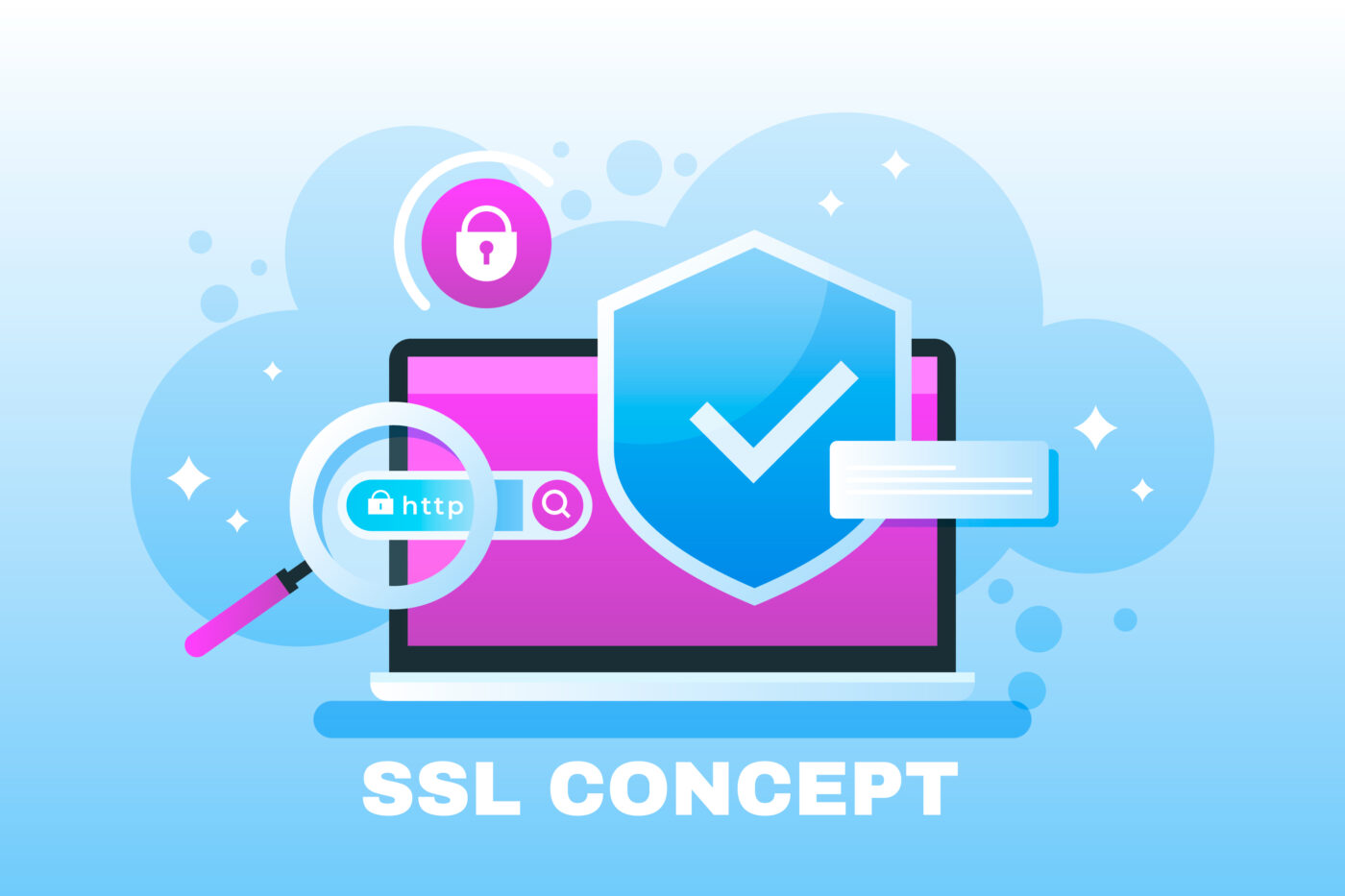Let’s dive into these essential website security protocols and understand their roles in web security.
What is SSL?
Secure Sockets Layer (SSL) is a security protocol designed to securely transfer data over the internet. It works by encrypting data between your browser and the website, ensuring that any exchanged information is coded and cannot be understood by unauthorized parties.
What is an SSL Certificate?
An SSL certificate acts like a digital passport that establishes a secure link between the server and the client. These certificates are cryptographic files that verify the identity of a website and ensure the data shared is secure. E-commerce and other sensitive-data websites must have these certificates to provide clients with data privacy and security.
Different SSL Certificates
There are six main types of SSL certificates:
- Single Domain SSL Certificate: Secures one domain and all its pages.
- Wildcard SSL Certificate: Covers a domain and all its subdomains (e.g., “www” subdomains).
- Multi-Domain Certificate: Secures multiple domains under a single certificate, also known as a SAN (Subject Alternative Name) certificate.
- Domain Validated Certificate (DV): Verifies the domain but requires minimal validation—just domain control.
- Organization Validated SSL Certificate (OV): Verifies both domain and organization legitimacy.
- Extended Validation SSL Certificate (EV): The highest level of validation, requiring a full background check on the organization.
How Does SSL Work?
SSL works in three simple steps:
- Connection Establishment: The website’s server sends its SSL certificate to the browser.
- Key Exchange: The browser and server exchange cryptographic keys to encrypt communication.
- Data Encryption: All data exchanged is encrypted, securing the communication.
What is TLS?
Transport Layer Security (TLS) is the successor to SSL, offering even greater security and performance. Most websites today use TLS, even though they may still refer to it as SSL.
TLS Latest Version 1.3
The latest version, TLS 1.3, improves performance by simplifying the connection establishment process and removing outdated encryption algorithms. It ensures faster, more secure communication between the browser and the server.
Key Differences Between SSL and TLS
- Development: SSL was created in the mid-90s, whereas TLS was introduced in 1999.
- Security: TLS offers stronger encryption and more secure protocols.
- Versions: SSL’s last version was 3.0, while TLS’s latest version is 1.3.
- Usage: TLS is now widely used, while SSL is outdated.
What is HTTPS?
HyperText Transfer Protocol Secure (HTTPS) is the secure version of HTTP, combining SSL/TLS for encrypted communication. Websites using HTTPS ensure secure, encrypted data transmission, making them safer for users.
Key Differences Between HTTP & HTTPS
- Data Transfer: HTTP transmits data in plain text, while HTTPS encrypts data.
- SSL/TLS Requirement: HTTP doesn’t require an SSL/TLS certificate; HTTPS does.
- Security: HTTP is vulnerable to data breaches, while HTTPS is highly secure.
- Search Ranking: Google prioritizes HTTPS websites in search results.
- User Trust: HTTPS is widely trusted and preferred by users.
Importance of HTTPS
- Trustworthiness: HTTPS websites appear more credible to users.
- Higher Security: HTTPS encrypts data, providing higher levels of security.
- Website Authentication: HTTPS proves the legitimacy of a website through SSL certificates.
- Data Integrity: It ensures that the transmitted data remains intact and unmodified.
Difference Between HTTPS and SSL
SSL (and its successor TLS) are security protocols, while HTTPS is the application of these protocols. In short, SSL/TLS ensures secure communication, and HTTPS is the method by which this security is implemented for web browsing.
What is IPsec?
Internet Protocol Security (IPsec) is a set of protocols that secure data transmitted over the internet. It works at the network level to ensure that all data passing through the network is encrypted and secure. IPsec is often used for securing Virtual Private Networks (VPNs).
Key Features of IPsec
- Strong Authentication: Verifies the identity of data senders and receivers.
- Data Encryption: Encrypts data packets to prevent unauthorized access.
- Security Assurance: Ensures data remains unaltered during transmission.
Difference Between SSL and IPsec
- Layer of Operation: SSL/TLS works at the transport layer, whereas IPsec operates at the network layer.
- Application: SSL/TLS secures communication between a browser and server, while IPsec secures network-to-network communications.
- Use Case: SSL is ideal for securing websites, while IPsec is typically used for VPNs.
- Configuration: SSL is easier to configure, while IPsec setups are more complex.
In today’s digital time, it’s necessary to ensure the security of your data. Therefore, SSL, TLS, HTTPS, and IPsec security protocols should be used to keep the communication between browsers and servers safe.
Enhance Your Website Security with DevGraphix
At Devgraphix, we understand the importance of website security. Our team specializes in implementing the latest security protocols to keep your website safe, secure, and trusted by your users. Whether you’re an e-commerce platform or a corporate website, we’ll help you secure your online presence with SSL, TLS, and HTTPS integration.
Reach out to us today to ensure your website is ready to meet the highest security standards!










